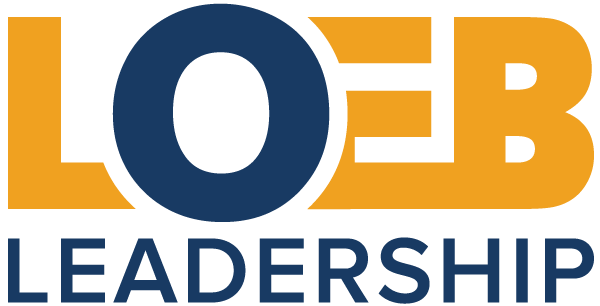Burnout Starts with Blurred Lines: Coaching for Work–Life Boundaries
In today’s hyperconnected world, leaders and professionals are facing a growing challenge: the erosion of work–life boundaries. With smartphones, remote work, and global collaboration across time zones, the line between “work” and “life” often dissolves. The result? Burnout.
The World Health Organization (WHO) now officially recognizes burnout as an “occupational phenomenon” caused by chronic workplace stress WHO definition of burnout. Symptoms include emotional exhaustion, cynicism, and reduced effectiveness. When left unchecked, burnout impacts not only individual wellbeing but also organizational performance.
At Loeb Leadership, we see this pattern often in our coaching engagements. Leaders know they should create boundaries, but without clear strategies, they struggle to implement them. That’s where coaching comes in. By setting boundaries, leaders not only protect their energy but also model healthier behaviors for their teams.
What Happens When Boundaries Vanish
When leaders fail to draw clear lines, several risks emerge:
Always on: The expectation of instant responses to emails or Slack messages extends the workday into evenings and weekends.
Erosion of purpose: Without time to recharge, leaders lose perspective and clarity.
Team culture impact: Employees often mirror their leaders. If leaders never disconnect, teams assume they shouldn’t either.
Research from Harvard Business Review shows that employees who feel pressured to be “always on” report significantly lower engagement and higher stress HBR: The Research Is Clear: Long Hours Backfire.
Companies and Leaders Setting the Standard
Microsoft under Satya Nadella
Satya Nadella shifted Microsoft’s culture toward empathy and balance. The company has piloted initiatives such as “no-meeting Fridays” and emphasizes flexibility, allowing employees to structure their schedules to protect personal time.
Lesson: When leaders model healthy boundaries, employees follow suit. Structural policies reinforce those norms.
Patagonia and Yvon Chouinard
Patagonia has long aligned its business with sustainable values. Employees are encouraged to surf, climb, or spend time outdoors during the workday. The company offers on-site childcare and flexible schedules.
Lesson: A values-driven approach naturally extends to employee wellbeing. Boundaries are easier to uphold when they align with purpose.
Basecamp (37signals)
Basecamp publicly advocates for reasonable work hours. The company has long maintained a “40 hours a week is enough” policy, and in summer, employees work four-day weeks. Leaders consistently reinforce that long hours are not a badge of honor.
Lesson: Clear policies, communicated consistently, ensure that boundaries are not optional—they’re expected.
Coaching Strategies for Work–Life Boundaries
1. Lead by Example
Leaders must model boundary-setting behaviors. For instance, avoid sending non-urgent emails after hours, or use scheduling tools to send messages during work hours. Employees notice—and take cues from these actions.
2. Embed Boundaries into Coaching Conversations
As coaches, we ask leaders reflective questions such as:
“When was the last time you fully disconnected from work?”
“What supports or policies would help you recharge more effectively?”
These questions prompt self-awareness and accountability.
3. Create Structural Supports
Encourage organizations to introduce practices like:
No-meeting days (e.g., Wednesdays for focus time).
“Quiet hours” when internal communications are paused.
Company-wide encouragement of vacation time without guilt.
4. Build Peer Accountability
Leadership circles or coaching cohorts can share practices and hold each other accountable. For example, one leader might commit to “device-free dinners” while another pledges to block time for exercise.
5. Reframe Boundaries as Strategic Leadership
Boundaries are not indulgence—they are performance enhancers. Leaders who protect time for rest make better decisions, inspire more creativity, and avoid costly turnover caused by burnout.
Resources from Loeb Leadership
Executive Coaching Services: Learn how personalized coaching helps leaders sustain wellbeing and performance.
Leadership Development Programs: Explore programs that help leaders set healthier boundaries for themselves and their teams.
Insights Blog: Read more about leadership, culture, and resilience.
Final Reflection
Burnout doesn’t begin with long hours. It begins when the lines between work and life disappear. Leaders who set boundaries don’t just protect themselves; they empower their teams to thrive.
Through coaching, we can help leaders reclaim those lines—firmly and thoughtfully—so that work remains fulfilling and life remains whole.
Follow David Sarnoff on LinkedIn for more insights on giving and receiving feedback, EQ, setting boundaries at work, mentorship & allyship, and more.



